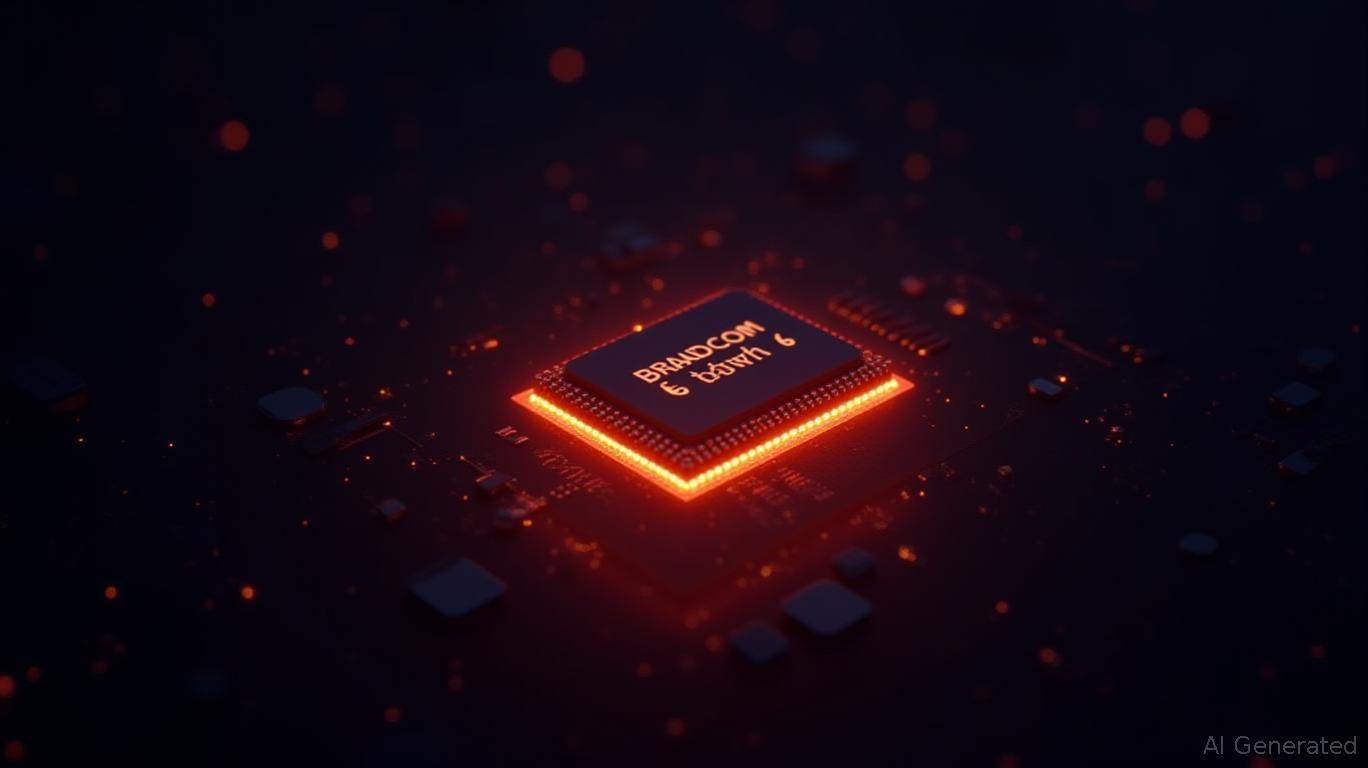Broadcom's AI Chip Dominance: A Contrarian Play on Underappreciated Growth
The semiconductor sector has been a battleground for investor skepticism, with concerns over macroeconomic headwinds and geopolitical risks casting a shadow over growth narratives. Amid this, Broadcom (AVGO) stands out as a paradox: a company delivering robust AI-driven revenue growth while trading at a valuation that suggests market complacency. This article argues that Broadcom's underappreciated catalysts—its AI chip leadership, strategic diversification, and $90+ billion addressable market (SAM) by 2027—position it as a compelling contrarian buy.

The AI Revenue Tsunami: Growth That's Hard to Dismiss
Broadcom's AI semiconductor revenue hit $4.4 billion in Q2 2025, a 46% year-over-year surge, marking the ninth consecutive quarter of growth. Management forecasts this to accelerate to $5.1 billion in Q3, a 60% YoY increase, extending the growth streak to ten quarters. This momentum is fueled by two pillars:
- AI Networking Dominance: Ethernet switches like the Tomahawk 6 (capable of 102.4 terabits per second) are enabling hyperscalers to build 100,000-node AI clusters, driving a 70% YoY jump in networking revenue. These chips are critical for Alphabet, Apple, and other partners deploying AI at scale.
- Custom Accelerators (XPUs): Broadcom is working with three confirmed hyperscalers and four prospects to build custom AI chips for training and inference. By 2027, these partnerships aim to deploy 1 million XPU clusters annually, unlocking a $90 billion SAM.
Yet, the stock trades at a PEG ratio of 1.8, below peers like NVIDIA (2.3) and AMD (2.5), despite its stronger cash flows. This disconnect suggests the market underestimates the durability of Broadcom's AI tailwinds.
Why the Market's Skepticism Is Misplaced
Critics cite risks: geopolitical tensions, customer concentration, and marginal declines in non-AI revenue. Yet Broadcom's strategy systematically mitigates these:
- Diversification Beyond Silicon: Its $6.6 billion infrastructure software division (driven by VMware's Cloud Foundation) grows at 25% YoY, with 87% of top customers now on subscription models. This recurring revenue insulates against chip demand volatility.
- Tomahawk 6's Scalability: By enabling scale-up clusters with lower latency and power, Broadcom reduces reliance on single customers. The chip's adoption is “tremendous,” with early proofs-of-concept already underway.
- SAM Visibility: The $90+ billion 2027 SAM is no speculative figure—90% of the revenue is already contracted via existing partnerships.
Contrarian Buy: A Dip Offers Entry into a Growth Machine
Broadcom's stock has dipped 12% year-to-date amid broader tech sector volatility, creating an opportunity. Here's why investors should capitalize:
- Valuation: At 30x forward P/E, Broadcom is cheaper than NVIDIA (45x) and AMD (35x), despite comparable or stronger AI revenue growth.
- Cash Flow Resilience: $6.4 billion in Q2 free cash flow (43% of revenue) funds dividends ($2.8B) and buybacks ($4.2B), while debt remains manageable at $67.8B post-repayment.
- Long-Term Catalysts: Tomahawk 6's rollout and XPU adoption will drive 50%+ AI revenue growth through 2026, with 2027's SAM acting as an overhang for upside surprises.
Investment Thesis: Buy Now, Harvest Later
The market's focus on near-term risks (e.g., export controls) ignores Broadcom's structural advantages: a proven AI revenue engine, a diversified software moat, and a $90B SAM within sight. The recent dip creates a rare entry point into a company poised to outperform in a fragmented semiconductor landscape.
Historical performance further supports this long-term outlook. A backtest of buying on the announcement date of quarterly earnings releases and holding for 30 trading days between 2020 and 2025 yielded an average return of -0.75%, with a Sharpe ratio of -0.01, a volatility of 25.81%, and a maximum drawdown of -48.71%. This underscores the risks of short-term trading around earnings events, where minimal returns are accompanied by elevated volatility. Investors are better served by focusing on the sustained growth trajectory, which the backtest suggests is only captured through a patient, multi-year holding period.
Recommendation: Buy Broadcom at current levels, with a 12-month price target of $750 (implying 25% upside), assuming the stock converges to peer PEG ratios. Hold for the long term to capture the 2027 SAM realization.
In a sector where fear overshadows fundamentals, Broadcom's underappreciated strengths make it a standout contrarian play. The AI revolution isn't slowing—Broadcom is just ahead of the curve.

Comments
No comments yet